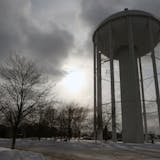Hennepin County District Judge Kathryn Quaintance remained skeptical Friday that the media and public should be allowed to watch key video evidence in the murder trial of former Minneapolis police officer Mohamed Noor.
In a hearing, Quaintance said the video, captured by police body cameras, shows officer behavior immediately after the July 2017 shooting that she believes will be key to arguments for attorneys on both sides throughout the trial. But the video also shows the victim, Justine Ruszczyk Damond, taking her final breaths with her clothing partly torn off, said the judge. "I don't know who would want to watch it unless it's somebody who wants to watch snuff films," Quaintance said. "It's shocking. And frankly, the adamance of wanting access to it is shocking."
The hearing came in response to a coalition of Minnesota news outlets filing a motion in the trial earlier this week, arguing that Quaintance's plan to prevent reporters and public observers in the courtroom from seeing what's on the video violates the First Amendment and common-law rights to access at open trials.
Leita Walker, the attorney representing eight media organizations, including the Star Tribune, said it's of great importance for reporters to see the footage and watch how the jurors and attorneys in the case react to it. While the jury will decide the fate of Noor, "the public gets to be the arbiter of whether the courts and the jury did it right" and whether the existing law is sufficient based on the outcome, said Walker.
Walker said courtrooms across the country frequently show graphic evidence in criminal trials, citing the case of a shooter who killed 12 people in a Colorado movie theater. In that case, prosecutors attempted to shield the public from seeing graphic photographs, but the judge ruled the public's right to view evidence outweighed the right to privacy.
"No other court that we have found ever has done what you're proposing," she said.
Quaintance did not issue a decision but said she would do so quickly, as opening statements are expected to begin early next week.
Quaintance said her restrictions on the video are not meant to keep anything from the public but to prevent a group of "strangers" from seeing Damond partly unclothed after lifesaving procedures and in the final moments of her life. She said the audio, transcripts and witness testimony will tell the story what happened that night.
![A black bear stopped after crossing Big Bay Road on Madeline Island, the largest of the Apostle Islands in Wisconsin, on Monday, May 31, 2021. ]](https://arc.stimg.co/startribunemedia/PWNYGIY3WTSWDBOGOYD775DPP4.jpg?&w=80&ar=1:1&fit=crop)


